
Wall St sees bargains, lure of Europe buoying cruise, hotel earnings
By Doyinsola Oladipo NEW YORK The post-pandemic rebound of international travel, particularly to Europe, is expected to be
2023-07-24 18:26

Tourists flown home as wildfires rage on Greek islands
By Fedja Grulovic RHODES, Greece (Reuters) -Tour operators began flying home holidaymakers as wildfires raged on the Greek island of
2023-07-24 17:45
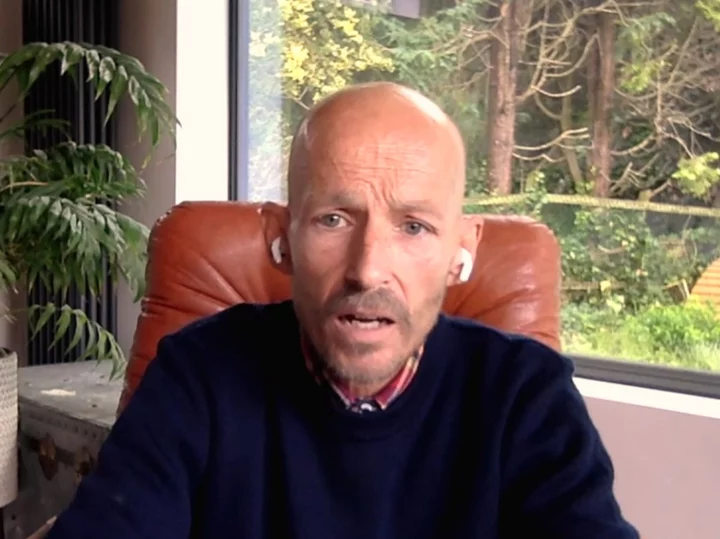
‘It’s not the doom and gloom you might think’: Jonnie Irwin details experience with palliative hospice care
Jonnie Irwin has spoken out about his “really good” experience with palliative care in a hospice, amid his journey with terminal cancer. The A Place In The Sun presenter, 49, appeared on BBC Morning Live on Monday (24 July) and gave viewers an update on his current health and treatment. Reassuring hosts Gethin Jones and Helen Skelton that his family is doing “great and very noisy”, Irwin was asked about his experience with palliative care, which focuses on improving the quality of life for anyone facing a life-threatening condition. Irwin said that he has been in palliative care since the day he received his terminal cancer diagnosis. He was first diagnosed with lung cancer in August 2020, but only publicly shared the news in November 2022 after it spread to his brain. He described his hospice experience as a “delight”, adding that his initial perception of such facilities were that they were “very much a boiling hot room full of people who looked frail and towards the end of their days”. However, it was “nothing of the sort” when he did actually go in. “It’s spacious, energised, comfortable,” Irwin told the show, adding: “I’ve had a really, really good experience at my hospice.” He urged anyone who is facing a terminal diagnosis to “embrace” end-of-life care and to try going to a hospice if they have been offered the choice. “My first experience of palliative care and hospice was blood transfusions,” he explained. “I had my first blood transfusion in hospital and then was invited to use the hospice, so I have it a go as a day patient and went into a lovely room. “I implore people to check out hospices. If you’ve got the choice of using it, then use it… I encourage people to explore that option because it’s not the doom and gloom operation you might think it was.” In June, Irwin made a rare red carpet appearance at the Television and Radio Industries Club (TRIC) Awards and said he is taking “every day as a gift as it comes”. When he first revealed his terminal cancer diagnosis, the Escape To The Country host said he “doesn’t know how long” he has left to live, but hopes he will inspire people to “make the most of every day”. He also celebrated his “best ever” Father’s Day last month with his three sons, Rex, four, and twins Rafa and Cormac, three, with wife Jessica Holmes. Irwin recently revealed that sometimes he has to “remove himself” from his family home to go to a hospice when he is in a lot of pain because it makes him “not good to be around”. He told Hello! magazine: “I’m like a bear with a sore head and I don’t want [my family] to be around that.” In another appearance with podcast OneChat previously, he said that being in pain affects his mood, explaining: “I have been close to death’s door, twice at least. You lose your memory, you lose your patience. I have got a very short temper. It’s not made me a better person, that’s for sure.” Read More Ruth Handler: The Barbie inventor who revolutionalised prosthetic breasts and narrowly avoided prison Fans defend Prince Harry and Meghan Markle amid breakup rumours Tim Shaddock rescue: Ben Fogle offers to pay for Australian sailor and dog to be reunited after emotional separation Carol Vorderman shares warning to sunbathers after skin cancer scare This is how often you should actually change your razor Are we working out too hard?
2023-07-24 17:22

Carol Vorderman shares warning to sunbathers after skin cancer scare
Carol Vorderman was well and truly a sun worshipper growing up. “Oh God, yes. I was burning away merrily for many, many years,” she remembers with a groan. The former Countdown presenter, 62, says her generation was the first to really become obsessed with the sun. “I’m of the generation where we started to sunbathe – my mother’s generation didn’t. We were also caught in the formative years, the 60s, 70s, 80s, where we had absolutely no idea of what sun protection was – you just couldn’t buy it. I think it was the 90s that began,” she explains. “So in all of our youth we were encouraging each other to sunbathe doused in cooking oil.” Vorderman remembers the ways people would try and boost their tan – from sunbathing surrounded by metal foil (so you could “get all the rays of the sun” and “burn nicely”) to discovering sunbeds (“we thought they were marvellous”) – and she was particularly keen on soaking up as much of the sun as possible, as she grew up by the sea. She says anyone her age “will remember all that”, but now “we know the dangers”. Vorderman is unsurprised by Cancer Research UK’s latest statistics, showing melanoma skin cancer cases in the UK have reached an all-time high. According to the charity, 17,500 cases are diagnosed every year, with projections suggesting the numbers could increase by 50% over the next 20 years. Research suggests people around Vorderman’s age are increasingly affected, with the probability of people aged 55 and older getting skin cancer almost tripling since the 1990s. Bristol-based Vorderman herself had a scare when she was around 50. She was concerned by some changes in her skin, so went to see a dermatologist – who sent off a biopsy for testing, with results revealing the cells were precancerous. The presenter is at pains to emphasise she doesn’t want people to feel sorry for her – “I had no symptoms, nothing like that” and the cells were removed – but she’s instead trying to highlight how crucial it is to be sun safe. “What I do now is I’ve had a check-up every year, all over, ever since,” she says – and that isn’t the only change she’s made. “I slather myself in SPF at all opportunities. In many ways, the damage is already done, but I don’t sunbathe now, or I cover myself up.” Vorderman has teamed up with Boots brand Soltan and Macmillan Cancer Support on a sun-safety campaign, and her efforts to raise awareness around the issue aren’t just inspired by her own experiences. Her mother died in 2017 after suffering from three types of cancer – the third being melanoma. “Not a single time in her life did she sunbathe – my mum had a different skin to me, she had moles, I don’t,” Vorderman says. “I know that makes you much more prone to melanomas.” Cancer Research UK cites a study that found melanoma risk was higher in people with more than 100 moles compared with people who have fewer than 15 moles. For Vorderman, talking about these issues, whether publicly or among friends, is key. “It’s part of life. The more we talk about it, the better it is – as with everything. It’s like talking about the menopause, talking about women’s issues, talking about all sorts of cancers… As we know with all cancers, the sooner you can have something checked, the better the outcome should be.” Vorderman has in recent years made a name for herself for posting her unfiltered political beliefs on social media, and whether it’s talking about politics or causes close to her heart, she won’t back down. “I’ve always been pretty confident, but now you get to a point in life where you think – I feel strongly about things as they stand in this country at the moment. I’ve never known anything as bad. I think everyone should speak out.” She believes in the old saying: ‘The only thing necessary for evil to triumph is for good people to say nothing’, adding: “I take that with me.” Read More Charity boss speaks out over ‘traumatic’ encounter with royal aide Ukraine war’s heaviest fight rages in east - follow live Carol Vorderman: Why my skin cancer scare means I no longer sunbathe This is how often you should actually change your razor Are we working out too hard?
2023-07-24 17:18
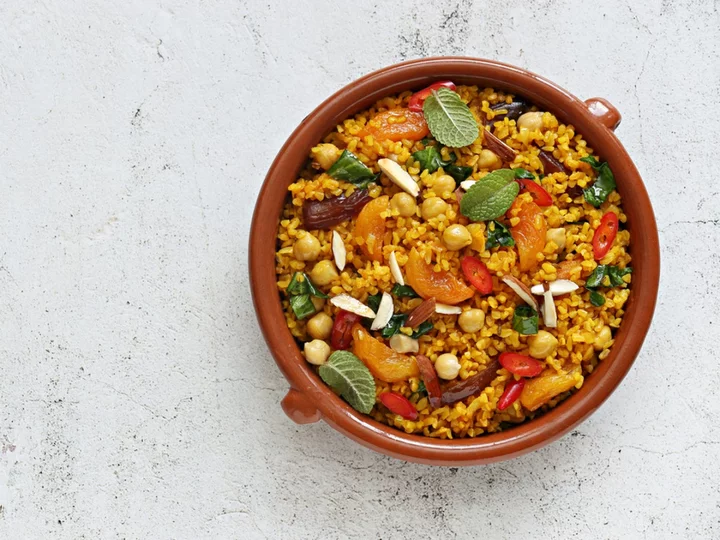
Five dinner ideas from around the world to try this week
Sometimes dinnertime is not just about satisfying our hunger. It’s a chance to embark on a culinary adventure from the comfort of our homes. To elevate your dining experience this week, we’ve curated a selection of five diverse and sustainable dinner recipes that celebrate global powerhouses of flavour while keeping an eye on our ecological footprint. Transport yourself to the bustling markets of Morocco with an aromatic vegetarian taigne. Embracing the harvest of the season, this hearty dish brings together the earthiness of butternut squash and carrots with the protein-packed goodness of chickpeas. Topped with a zesty lemon-dill sauce, the baked salmon dish below offers a refreshing twist to your taste buds while delivering a dose of healthy omega-3 fatty acids. A true taste of British comfort, a classic beef and mushroom pie is a hearty masterpiece that showcases locally sourced beef. The recipe also minimises waste and maximises taste, making it an economical choice for families. Capturing the vibrant colours of the Mediterranean, stuffed peppers are a celebration of wholesome and vegetarian goodness. Filled with couscous, chickpeas and a medley of vegetables, this dish burts with nutritious delights. Lastly, journey to the aromatic landscapes of Thailand with a tantalising green curry. Tender chicken thighs dance harmoniously with fresh vegetables, bathed in a luscious coconut curry sauce. Bon appétit! Spiced vegetable tagine This Moroccan-inspired vegetarian tagine is bursting with flavour from seasonal vegetables and aromatic spices. It’s perfect for a cosy dinner and packed with nutritious goodness. Serves: 4 Prep time: 15 minutes | Cooking time: 1 hour Ingredients: 2 tbsp olive oil 1 large onion, finely chopped 3 garlic cloves, minced 2 tsp ground cumin 1 tsp ground coriander 1 tsp ground cinnamon ½ tsp ground ginger 1 butternut squash, peeled and diced 2 carrots, peeled and sliced 1 tin (400g) chickpeas, drained and rinsed 1 tin (400g) chopped tomatoes 500ml vegetable broth 100g dried apricots, chopped Salt and pepper to taste Fresh coriander leaves for garnish Method: 1. Heat the olive oil in a large pot over medium heat. Add the chopped onion and garlic, sauté until softened. 2. Stir in the ground cumin, coriander, cinnamon, and ginger. Cook for another minute until fragrant. 3. Add the butternut squash and carrots, tossing them with the spices. 4. Pour in the chickpeas, diced tomatoes, vegetable broth, and chopped apricots. Season with salt and pepper. 5. Bring the mixture to a boil, then reduce the heat to low, cover the pot, and let it simmer for about 1 hour or until the vegetables are tender. 6. Serve the tagine over couscous or rice, and garnish with fresh coriander leaves. Baked salmon with lemon-dill sauce This delicious and sustainable salmon dish is baked to perfection and served with a zesty lemon-dill sauce. It’s a delightful dinner that’s easy to prepare and full of omega-3 fatty acids. Serves: 2 Prep time: 5 minutes | Cooking time: 20 minutes Ingredients: 2 salmon fillets 1 tbsp olive oil 1 lemon, thinly sliced Salt and pepper to taste ¼ cup (60g) plain yogurt 1 tbsp fresh dill, chopped 1 tsp lemon zest 1 tsp lemon juice Method: 1. Preheat the oven to 200C (180C fan). Grease a baking dish with olive oil. 2. Place the salmon fillets in the baking dish. Season with salt and pepper, then lay lemon slices on top of each fillet. 3. Bake the salmon for 15-20 minutes or until it flakes easily with a fork. 4. While the salmon is baking, prepare the lemon-dill sauce. In a small bowl, mix together the plain yogurt, fresh dill, lemon zest, and lemon juice. 5. Serve the baked salmon with the lemon-dill sauce drizzled on top. Beef and mushroom pie This classic British beef and mushroom pie is a comforting and hearty dish, perfect for a family dinner. The tender beef and earthy mushrooms are enveloped in a rich gravy, all wrapped in a flaky pastry. Serves: 6 Prep time: 20 minutes | Cooking time: 2 hours Ingredients: 500g beef stew meat, diced 2 tbsp vegetable oil 1 large onion, finely chopped 2 garlic cloves, minced 250g button mushrooms, sliced 2 tbsp plain flour 500ml beef broth 2 tsp Worcestershire sauce Salt and pepper to taste 1 pack (320g) ready-rolled puff pastry 1 egg, beaten Method: 1. Preheat the oven to 180C (160C fan). 2. In a large oven-safe pot, heat the vegetable oil over medium-high heat. Add the diced beef and brown on all sides. Remove the beef from the pot and set it aside. 3. In the same pot, sauté the chopped onion and garlic until softened. Add the sliced mushrooms and cook until they release their juices. 4. Stir in the plain flour and cook for a minute to form a roux. 5. Pour in the beef broth and Worcestershire sauce, stirring to combine. Season with salt and pepper. 6. Return the browned beef to the pot, cover with a lid, and transfer the pot to the preheated oven. 7. Bake the beef mixture for about 1 hour and 30 minutes or until the beef is tender and the gravy has thickened. 8. Meanwhile, roll out the puff pastry and cut it to fit the top of the pie dish. 9. Once the beef mixture is done, pour it into a pie dish and cover it with the puff pastry. Brush the pastry with beaten egg for a golden finish. 10. Bake the pie in the oven at 200C (180C fan) for 20-25 minutes or until the pastry is puffed and golden. Mediterranean stuffed peppers These vibrant Mediterranean stuffed peppers are a flavourful vegetarian option that’s easy to make. Filled with couscous, chickpeas, and Mediterranean vegetables, they are a healthy and delicious dinner choice. Serves: 4 Prep time: 15 minutes | Cooking Time: 25 minutes Ingredients: 4 large bell peppers (any color) 100g couscous 200ml vegetable broth 1 tin (400g) chickpeas, drained and rinsed 1 courgette, diced 1 red onion, diced 1 tbsp olive oil 1 tsp dried oregano ½ tsp ground paprika Salt and pepper to taste Fresh parsley for garnish Method: 1. Preheat the oven to 200C (180C fan). 2. Cut the tops off the bell peppers, removing the seeds and membranes. Brush the outside of the peppers with olive oil. 3. In a saucepan, bring the vegetable broth to a boil. Remove from heat, add couscous, cover, and let it sit for 5 minutes until fluffy. 4. In a separate pan, heat olive oil over medium heat. Add the diced zucchini and red onion, sautéing until softened. 5. Stir in the cooked couscous, chickpeas, dried oregano, ground paprika, salt, and pepper into the sautéed vegetables. 6. Stuff the mixture into the prepared bell peppers and place them in a baking dish. 7. Bake the stuffed peppers for 20-25 minutes or until the peppers are tender and slightly charred on the outside. 8. Garnish with fresh parsley before serving. Thai green curry with chicken Transport your taste buds to Thailand with this aromatic and creamy Thai green curry. Made with tender chicken and seasonal vegetables, it’s a delightful balance of spicy, savoury, and coconut goodness. Serves: 4 Prep time: 15 minutes | Cooking time: 25 minutes Ingredients: 500g boneless chicken thighs, sliced 2 tbsp vegetable oil 2 tbsp green curry paste 400ml coconut milk 1 red bell pepper, thinly sliced 100g green beans, trimmed and halved 1 courgette, sliced 2 tbsp fish sauce 1 tbsp brown sugar Fresh basil leaves for garnish Cooked jasmine rice to serve Method: 1. In a large pan or wok, heat the vegetable oil over medium heat. Add the green curry paste and cook for a minute until fragrant. 2. Stir in the sliced chicken and cook until it’s browned on all sides. 3. Pour in the coconut milk and bring the mixture to a simmer. 4. Add the sliced red bell pepper, green beans, and courgette to the curry. Cook until the vegetables are tender-crisp. 5. Season the curry with fish sauce and brown sugar, adjusting the seasoning to taste. 6. Serve the Thai green curry over jasmine rice and garnish with fresh basil leaves. Read More Hi Barbie! Nine cocktails inspired by the doll’s most iconic outfits The National Portrait Gallery’s new restaurant is fabulous upgrade Three barbecue recipes to try that aren’t burgers The dish that defines me: Alex Outhwaite’s Vietnamese bun cha 3 TikTok-approved recipes for picnic season Imad Alarnab: In Calais’ Jungle refugee camp, food restored our faith
2023-07-24 17:15

ITC Dethrones India Unilever Unit to Become No. 1 Consumer Stock
Asia’s largest cigarette maker ITC Ltd. is set to reclaim its position as India’s most valuable fast-moving consumer
2023-07-24 16:56

El Niño Threat Looks Underpriced in Emerging-Market Rally
Emerging-market bond bulls are betting the imminent end of central bank interest-rate hikes will help power up the
2023-07-24 16:52

Carol Vorderman: Why my skin cancer scare means I no longer sunbathe
Carol Vorderman was well and truly a sun worshipper growing up. “Oh God, yes. I was burning away merrily for many, many years,” she remembers with a groan. The former Countdown presenter, 62, says her generation was the first to really become obsessed with the sun. “I’m of the generation where we started to sunbathe – my mother’s generation didn’t. We were also caught in the formative years, the 60s, 70s, 80s, where we had absolutely no idea of what sun protection was – you just couldn’t buy it. I think it was the 90s that began,” she explains. “So in all of our youth we were encouraging each other to sunbathe doused in cooking oil.” Vorderman remembers the ways people would try and boost their tan – from sunbathing surrounded by metal foil (so you could “get all the rays of the sun” and “burn nicely”) to discovering sunbeds (“we thought they were marvellous”) – and she was particularly keen on soaking up as much of the sun as possible, as she grew up by the sea. She says anyone her age “will remember all that”, but now “we know the dangers”. Vorderman is unsurprised by Cancer Research UK’s latest statistics, showing melanoma skin cancer cases in the UK have reached an all-time high. According to the charity, 17,500 cases are diagnosed every year, with projections suggesting the numbers could increase by 50% over the next 20 years. Research suggests people around Vorderman’s age are increasingly affected, with the probability of people aged 55 and older getting skin cancer almost tripling since the 1990s. Bristol-based Vorderman herself had a scare when she was around 50. She was concerned by some changes in her skin, so went to see a dermatologist – who sent off a biopsy for testing, with results revealing the cells were precancerous. The presenter is at pains to emphasise she doesn’t want people to feel sorry for her – “I had no symptoms, nothing like that” and the cells were removed – but she’s instead trying to highlight how crucial it is to be sun safe. “What I do now is I’ve had a check-up every year, all over, ever since,” she says – and that isn’t the only change she’s made. “I slather myself in SPF at all opportunities. In many ways, the damage is already done, but I don’t sunbathe now, or I cover myself up.” Vorderman has teamed up with Boots brand Soltan and Macmillan Cancer Support on a sun-safety campaign, and her efforts to raise awareness around the issue aren’t just inspired by her own experiences. Her mother died in 2017 after suffering from three types of cancer – the third being melanoma. “Not a single time in her life did she sunbathe – my mum had a different skin to me, she had moles, I don’t,” Vorderman says. “I know that makes you much more prone to melanomas.” Cancer Research UK cites a study that found melanoma risk was higher in people with more than 100 moles compared with people who have fewer than 15 moles. For Vorderman, talking about these issues, whether publicly or among friends, is key. “It’s part of life. The more we talk about it, the better it is – as with everything. It’s like talking about the menopause, talking about women’s issues, talking about all sorts of cancers… As we know with all cancers, the sooner you can have something checked, the better the outcome should be.” Vorderman has in recent years made a name for herself for posting her unfiltered political beliefs on social media, and whether it’s talking about politics or causes close to her heart, she won’t back down. “I’ve always been pretty confident, but now you get to a point in life where you think – I feel strongly about things as they stand in this country at the moment. I’ve never known anything as bad. I think everyone should speak out.” She believes in the old saying: ‘The only thing necessary for evil to triumph is for good people to say nothing’, adding: “I take that with me.” Broadcaster and author Carol Vorderman MBE is working with Boots brand Soltan, which is joining forces with Macmillan Cancer Support for the second year running, as its official sun-safety partner.
2023-07-24 16:46
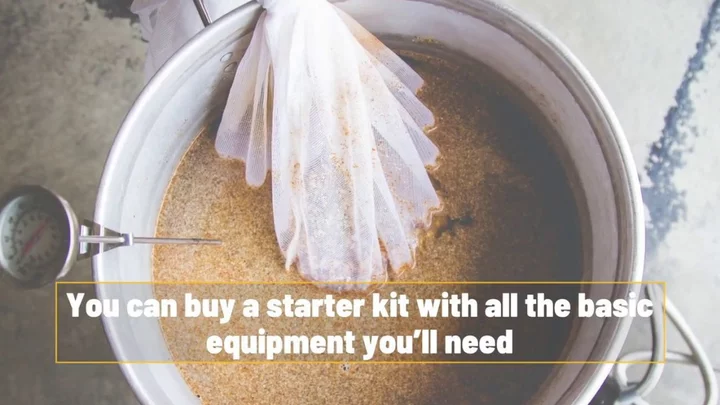
People are traumatised to learn that pints of beer contain fish guts
People online have recently been mortified to learn that some beers contain a product derived from fish bladders. Some breweries use isinglass, which is a gelatine-like substance from drying and processing certain fish bladders. It is part of the flocculation process to alter the colour of the beer. Explaining the technicalities, Craft Beer & Brewing said: "Isinglass is a traditional finings, a substance that causes yeast to precipitate out of suspension, leaving beer clear. Isinglass is derived from the swim bladders of certain tropical and subtropical fish. "When macerated and dissolved for several weeks in dilute food-grade acids, they form a turbid, colourless, viscous solution largely made up of the protein collagen. This material is known to brewers as isinglass finings." Sign up for our free Indy100 weekly newsletter However, it's worth noting that with advances in filtration technologies, isinglass is not as common anymore. "The use of isinglass has declined and today it is largely confined to cask-conditioned ales," Beer & Brewing explained. "Although some American craft brewers also use it to clarify beer without the use of filtration." Guinness famously altered their recipe after 256 years to become vegan-friendly. In 2016, a spokesperson told The Times: "Whilst isinglass is a very effective means of clarification, and has been used for many years, we expect to stop using it as the new filtration asset is introduced." Of course, the use of the substance makes some beers not suitable for vegans. But, in the meantime, there are plenty of alternatives that don't contain the fish product including Heineken, Peroni, Birra Moretti and Camden Hells. If unsure whether a beer is isinglass-free or not, Barnivore is a great place to start with a database of almost 40,000 beers and their ingredients. Have your say in our news democracy. Click the upvote icon at the top of the page to help raise this article through the indy100 rankings.
2023-07-24 16:46
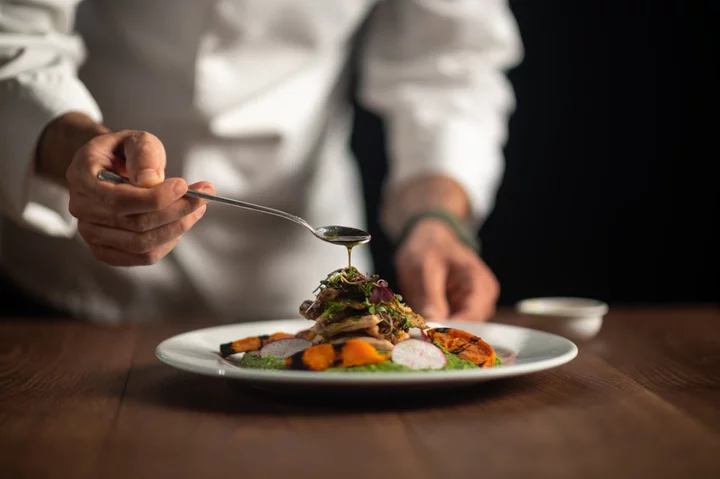
Restaurant introduces ‘minimum spend’ that will see solo diners pay double to eat alone
A restaurant in London has sparked criticism over its decision to introduce a minimum spend next month that will see solo diners charged double for their meals. In August, Alex Dilling at Hotel Café Royal, which boasts two Michelin stars, will increase the prices of its tasting menus. Currently, a five-course tasting menu costs £125 per person, while it’s £175 for seven courses. However, from 17 August, the restaurant will increase its prices by 11 per cent, bringing five courses to £165 and seven courses to £195. This is due to an increase in supplier costs and rising staff shortages in London, due to Brexit, that has put pressure on the business. For those dining alone, though, the new minimum spend means solo visitors could be charged a minimum of £330 to visit the restaurant due to the volume of requests they receive. However, the restaurant confirmed that they keep one to two tables for solo diners for every service without the minimum spend. So solo diners who book within 24 to 48 hours of their required booking time could be able to swerve the minimum spend depending on whether those tables are available at the time. Nonetheless, the initiative sparked outrage on Twitter, with commenters quick to point out the joys of dining alone, and how solo diners are often stigmatised. “F*** the Hotel Café Royal then… Solo dining is one of life’s great pleasures,” tweeted one person. “Oh great news. Yet another penalty for being single,” another added. Hugh Smithson-Write, who works in restaurant PR, tweeted: “A classic example of making the customer the problem, rather than finding a solution. “If you get ‘many solo diner requests’ how about you reconfigure your dining room to accommodate that and maximise the revenue? This is the very opposite of hospitality!” Victoria Sheppard, chief executive at Alex Dilling at Hotel Café Royal, told The Independent: “Since achieving our two Michelin stars the demand for solo dining has increased dramatically and whilst we make every effort to accommodate solo diners, we also have to be considerate to the running costs of our business. “That said, we are increasing our opening hours from 17 August and will be able to accommodate more solo diners (without any discretionary minimum spend). 95 per cent of our solo diners requesting tables since we implemented a discretionary minimum spend when we are at capacity for solo diners have been more that happy to proceed with their booking, enjoying wine pairings or champagne of wine alongside their meal. “Nightclubs in our local vicinity have minimum spends for tables or hotels you pay the same price whether one guest or two which is never under dispute.” Read More Michelin star chef Marcus Wareing gives controversial answer to the best pizza in London Tom Kerridge addresses backlash to his £35 fish and chips at Harrods: ‘They shout at me’ Chef defends viral chicken recipe after TikTok backlash: ‘PSA to the seasoning police’ Restaurant with ‘tips are a privilege’ policy sparks intense backlash on social media Cher is launching a gelato brand called ‘Cherlato’ Popeyes widely mocked for attempt to join ‘girl dinner’ trend
2023-07-24 16:26

This is how often you should actually change your razor
Reckon you could get another shave out of your razor? We’ve all done it, wondering how long we can actually use one, as we whip it out again and again. Well, it may not be worth the risk to your health, according to dermatologist and Dove expert, Dr Cristina Soma. So, how often should you change your razor? “More people cling on to their razors for much longer than is advised, and are surprised when we recommend that a razor is changed every five to seven shaves,” says Soma. “The frequency of change also depends on other factors, such as how frequently and how many areas you shave, your hair thickness and type, the quality of your blade, and whether you are good at washing it off afterwards and looking after your blade.” What happens if you don’t? “Most of us own a dull blade full of skin cells, soap and hair debris. In the worst cases, you can also see rust on the blade,” Soma says. “When all this grime accumulates and the blade dulls, you are less likely to get a close, smooth shave, and more likely to cut yourself. Bacteria can accumulate on the blade and have some serious consequences, too. “Using a dull razor blade can result in shaving rash and bumps, ingrown hairs, and inflamed or traumatised skin. More seriously, it can result in cuts and possibly lead to infections,” she explains. Infections “You could get any kind of infection from using an old, unsharp razor. After a while of using the same blade, bacteria starts to grow, which will create irritation on your underarms,” she explains. Shaving armpits, pubic hair and legs may cause real issues. “The most common form of infection would be a bacterial skin infection, with symptoms including redness, swelling, pain or pus. Treatment for this would be an antibiotic ointment. “To really care for your underarms, you need to change your razor frequently, use a shaving cream or gel, shave in the direction of hair growth and rinse the blade thoroughly, then store it in a clean, dry place. “Furthermore, the underarm area is very delicate, so take care in choosing a deodorant that supports the skin barrier,” explains Soma. Resistance and irritation If you feel any resistance when shaving with an old razor, it could cause an issue. “If you can feel your razor tugging at your hair, rather than gliding over it smoothly, it’s likely blunt and will cause skin irritation, razor burn and ingrown hairs,” says Dr Tim Clayton, consultant dermatologist at Pall Mall Medical in Manchester. “Ingrown hairs can lead to bacterial infections, hyperpigmentation and keloids [a type of raised scar] so it’s important to avoid these where possible,” he says. Rust If you see a hint of orange on there, it isn’t worth using. “Tetanus can be spread via a wound caused by a rusty object, but it isn’t the rust that will cause tetanus – it’s the bacteria on the razor. “If you’re concerned about contracting tetanus, make sure you’re up to date with your tetanus vaccinations,” says Clayton. Concerns about cost In a 2021 International Journal of Women’s Dermatology study, women’s four-blade razors were priced 66% higher than men’s, who may be less inclined to shave their bodies. So, if changing your razor is costly, it may be worth considering your relationship with your body hair. “There is no hygiene benefit to shaving your body hair. What you choose to do is completely up to you,” says Soma. “Increasingly, we are seeing more acceptance and diversity in what people do with their hair, and from a medical standpoint, as long as you’re doing it in a hygienic and safe way, carry on.” Read More Charity boss speaks out over ‘traumatic’ encounter with royal aide Ukraine war’s heaviest fight rages in east - follow live Are we working out too hard? How to perk up urban balcony gardens and window boxes Sadiq Khan and Romesh Ranganathan: Women still aren’t equal in politics and comedy
2023-07-24 16:21
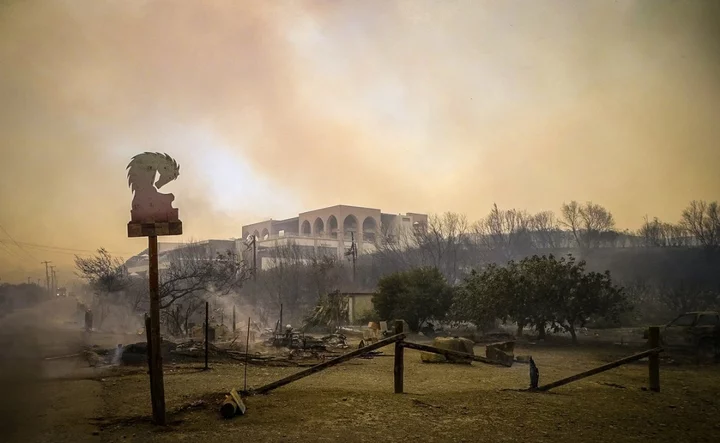
‘It was hell on earth’: British tourists describe fleeing for their lives from Rhodes wildfire
A mother who says she experienced “hell on earth” was among the British tourists forced to flee Rhodes this weekend as fierce wildfires continue to rip through the Greek holiday island. Officials on the island, which sits southwest of Turkey in the Aegean Sea, launched Greece’s biggest-ever evacuation operation as the blaze tore through vast swathes of land, threatening resorts popular with holidaymakers. Tourists were forced to shelter in schools, sports stadiums, airports and alternative hotels as firefighters desperately fought to contain the flames, which officials fear may worsen on Monday as wind speeds more than double on the island. As Britons rushed to book seats on packed flights home after the evacuations, holiday firms including Jet2, the UK’s biggest tour operator, announced they would be cancelling services to Rhodes and would be sending empty planes to bring stranded tourists home. Airline easyJet said they would operate repatriation flights to bring home stranded British holidaymakers. Two rescue flights are scheduled on Monday and a third on Tuesday, they said. Greek authorities also told people in some parts of Corfu to evacuate due to further wildfires on Sunday evening. Around 19,000 people in total are reported to have been evacuated from Rhodes, the largest of Greece’s Dodecanese islands, which has a local population of about 115,000. Becky Mulligan, a 29-year-old training manager from Leicester, was staying at the Princess Sun Hotel in the Kiotari resort on Rhodes’s southeast coast when she, her five-year-old daughter, and sister, 20, were forced to quickly pack their bags and flee as the sky turned “orange”. “Smoke started coming up against the window of the hotel so we decided to run,” she told The Independent. “There were helicopters hovering above making the whole building shake. “We ended up legging it down a dirt track as the smoke came up around our legs. I thought I was going to die. It was like hell on earth.” Ms Mulligan and her family were forced to seek refuge on the beach as they waited for coaches to come and pick them up, which she described as the “most scary point”. She said hundreds of people were waiting to be evacuated with grown adults “basically trampling on children to get to the buses”. The trio was then taken to Gennadi Grande resort and from there bussed to another location, where they were forced to spend Saturday night on the floor of a hotel room. On Sunday morning they managed to escape safely, sharing a taxi with another family to the airport where their flight back to the UK was due to depart after 11pm. Dan Jones, a sports teacher from Torquay, Devon, said he had to climb onto a fishing trawler with his sons on Saturday night, describing it as “the scariest moment in my entire life”, adding: “What brave boys.” Ian Wakefield told Times Radio he spent the night in a school playground in Faliraki after being evacuated from his hotel in Pefki. He said: “It didn’t really feel real – being in imminent danger of being burned to death. Between midnight and around 5am this morning we were going through an evacuation which was pretty chaotic. “There were a lot of upset people and children who were understandably quite hysterical. It was all very confusing – the instructions from the hotel manager were unclear. “You had to make your own choice in the end. I’ve had to leave quite a lot of luggage in the hotel.” As fire crews struggled to contain the blazes and thick black smoke continued billowing into the sky, British holiday firms began cancelling flights to Rhodes, although some planes touched down on the island on Saturday night and early on Sunday morning despite the emergency. Jet2 Holidays cancelled all flights to the island until 30 July and said it would send empty planes to bring stranded Britons home, while Tui said it would cancel all flights and holidays until Tuesday. Thomas Cook later announced it had cancelled all holidays to Kiotari and Lardos – the areas of the island most at risk – until 31 July and would be in touch with customers to arrange “swift refunds”. It has also offered full refunds to customers due to depart for other parts of the island on Sunday and Monday who wish to cancel their trip. But some holidaymakers suggested that operators should have cancelled flights to the island sooner. Lowri Jones from Crymych, Pembrokeshire, Wales, described scenes of “chaos” at Rhodes Airport when she arrived there on Saturday night. The mother of one, 52, travelled to the Greek island with her thirteen year-old-daughter for a holiday. “It was absolute pandemonium at the airport, with long queues of people trying to find out what coach they were,” she told The Independent. “We booked with Tui and there has been very little communication from them. “We had been due to stay at the Atlantica Dreams hotel in Gennadi but were driven – without warning – to a completely different resort in the north of the island due to the wildfires.” She added: “Me and my daughter ended up spending the night on the floor with other people in a room with no air conditioning in sweltering heat – it was horrible. “To be honest, I don’t think we should have even been there in the first place. The flight was delayed because the pilot had to do a risk assessment to see if it was safe to land because of the fires. “Tui should have told us it wasn’t safe and given us a refund – at least that way I could have made a decision about booking somewhere else. Now I’m stranded in Rhodes and having to look at booking flights home.” A spokesperson for Tui said it is continuing to monitor the wildfires and appreciated the “distressing and difficult” situation for its customers. Anyone who remains in Rhodes is urged “follow the advice of the local authorities who are managing tourist movements in impacted areas,” they said. Britain’s ambassador to Greece said the Foreign Office had sent a “rapid deployment team” to help UK tourists who were among thousands forced to flee for their lives on Saturday as the wildfire spread. Read More ‘It was hell on earth’: British tourists describe fleeing Rhodes wildfire inferno Rhodes wildfire: How are British travel companies responding to the emergency? Corfu evacuations begin as fleeing Rhodes tourists spend second night in airport Holidays and flights to Greek island ravaged by fire cancelled UK airlines still selling tickets to Rhodes despite wildfire inferno Greece: Smoke turns Rhodes sky grey and hazy as wildfires continue to rage
2023-07-24 15:58
